Zooming in: how mobile is making 'pano' mainstream
EyeforTravel columnist Andrew Hennigan has been taking a closer look at the business and consumer benefits of using panoramic technology
Panoramic images are not new; throughout the era of film photography panoramas up to 360 degrees were made with special rotating cameras. These static panoramas were easy enough to make but awkward to view and difficult to use in brochure layouts. Indeed in the travel space panoramic photos have long been used in promotion.
But today, thanks to digital photography, it is now possible to capture a panorama using almost any digital camera or even just a smartphone and then to view the results on a website, smartphone or tablet. With panoramic technology so readily available it is moving from a niche to the mainstream and even small businesses and individual travellers are benefiting. In fact, any company not offering ‘pano’ visits to their location could soon risk being left behind.
“Panoramic imagery is fun, affordable and available now,” says Rob Holding, a UK-based professional photographer. “If you are a potential customer with the choice of two companies, one of which allows you to virtually walk around, zoom in, explore and experience all the features that customers love…I hope you see where I am going with this.”
Holding creates both panoramic photos and virtual tours, which combine photography with navigation technology to make virtual worlds that can be visited. This is much like the popular Google Street View but at a more local level. Many companies including EasyPano, Real Tour Vision and Kolor already offer this kind of technology; and Google offers this option to businesses through their Google Business Photos and Google Trusted Photographer programmes.
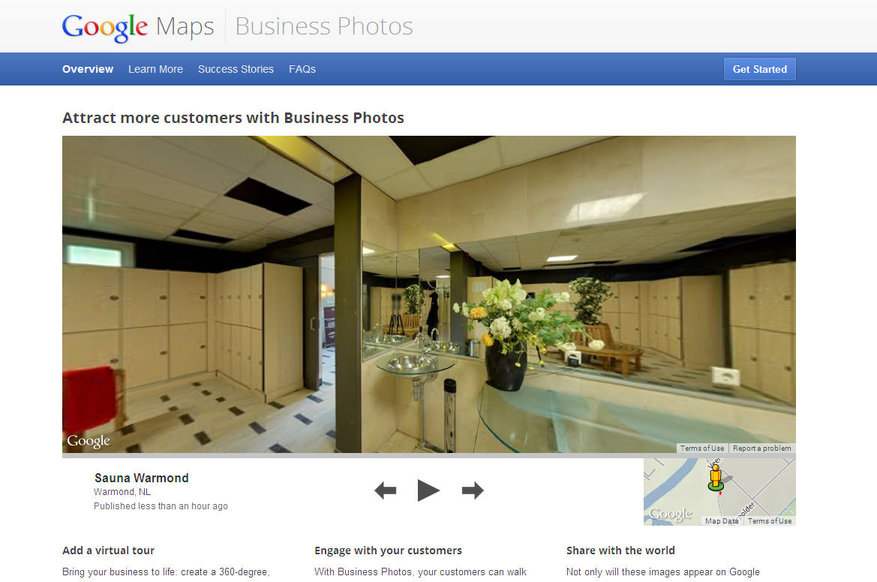
“I was looking to add a virtual tour service to my business and looked at different technologies to ‘stitch’ panoramic images to create a tour,” says Holding, a Google Trusted Photographer himself. “The only system I found to offer a smooth transition between images is Google Business Photos.” Google also has the convenient advantage of being able to link to Streetview, Google search and other Google products. Holding used this system to create this streetview-like indoor virtual tour for a client.
In addition to the paid business photos service, Google also offers a free app for Android smartphones and tablets, Google Photosphere, which allows individual users, photographers and businesses to add their own panoramic photos into Google Maps. In a similar way, Microsoft is encouraging users who create panoramas with their Photosynth app to upload them so that they can be shown with search results for their Bing search engine.
Business benefit for all
But what makes panoramic photo technology accessible to even the smallest business is the emergence of free and versatile mobile phone apps like DMD, Photosynth and Sphere. These apps take advantage of the surprisingly high quality of latest-generation phone cameras and the phone’s built-in motion sensors to take panoramic photos without special supports or accessories. Details vary but usually the process is simple: you hold the camera in your hand and move it around slowly. As the phone moves, it will automatically take all the pictures it needs. Later you stitch the images into a seamless panorama and upload it to a website where it can be viewed and shared.
DMD by Dermandar is a popular app that makes 360-degree panoramas that let you look in any direction horizontally; the results are usually embedded in a website like this example from Gran Canaria Virtual, allowing you to look around a landscape or a hotel room. Photosynth by Microsoft adds the capability of making a completely spherical panorama where you can not only look around, but also look up and down.
Sphere takes this one step further and not only makes spherical panoramas but also exploits the motion sensors in a smartphone or tablet so that when you view a panorama as you move the phone around you see what was in that direction in the original scene. This gives a much greater sense of being actually there.
Sphere can be used ‘freehand’, simply moving the camera around in your hand. For better, faster results, you can use a dedicated motorised support, the Motr Galileo, which automatically moves the smartphone into the correct positions.
“Democratising how we create, distribute and interact with spheres holds a lot of promise,” says Sphere founder and CEO Charles Armstrong, who argues that the challenge for travel and hospitality companies has been convoluted and expensive technology. “Now, however, Instagram-ifying the process is exposing the industry to the merits of spheres. What’s even more exciting is that it’s exposing travellers, too, unlocking a wealth of user-generated content that is both personally gratifying to the traveller and immensely valuable to the establishments,” he says.
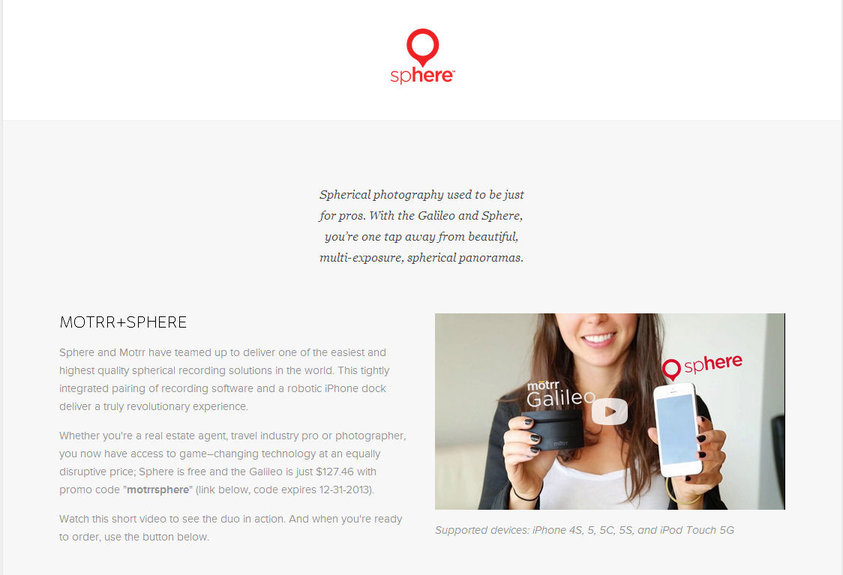
According to Armstrong, spheres are shown to increase bookings by 64-67%. The reason is simple: people lack confidence when planning travel. Photos and videos are cropped, curated experiences where the user is not in control and not given a full view. “When you place that person in the middle of a hotel room, ballroom or poolside with the ability to navigate these reservations fade away,” says Armstrong.
Tourism and Events Queensland is using Sphere technology both on their website and on their Queensland Explorer Holiday Planner iPad app.
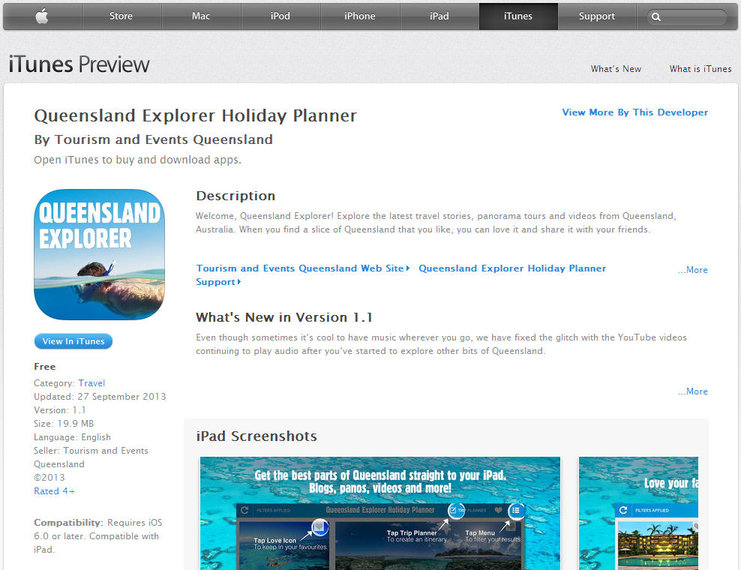
“Panoramas are a great way to showcase Queensland’s destinations and help us to truly show rather than tell potential visitors about our top spots to visit,” says Chris Chambers, Director of Digital Marketing at Tourism and Events Queensland. “As the Sphere app gains momentum it becomes easier for consumers to add their own smartphone camera updates.”
While Sphere’s technology is useful for destination marketers like Tourism & Events Queensland it can also be used to generate virtual tours for things that don’t exist yet, like this tour of a Royal Caribbean International cruise ship made before the ship was completed. It is also useful for smaller businesses.
“For smaller hotels and B&Bs Sphere will democratise 360-degree photography with the Motr Galileo iPhone robot paired with the free Sphere app by making do-it-yourself virtual photography shoots fast, easy and affordable,” says Sphere Chief Marketing Officer Dan Smigrod. “Imagine hotels recording and publishing 360-degree images in less than three minutes. Imagine a local hotel sales manager responding to a request for proposals by including 360 views of event spaces – created in less than three minutes.”
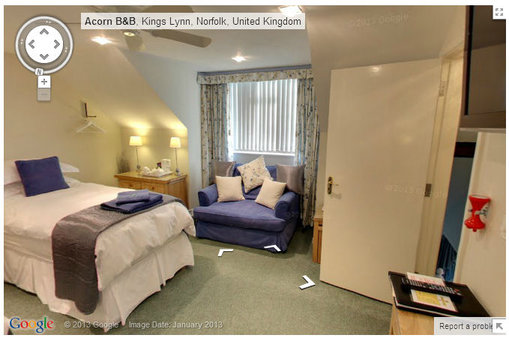
Sphere apps can be downloaded free for IOS and Android smartphone and tablets but for some users this will not be needed. “Sony has begun pre-installing the Sphere app on new mobile devices starting with their flagship Xperia Z1”. Says Smigrod. “Samsung has also licensed the app for their Android devices. “
The options are endless
Spherical panoramas and virtual tours are not the only options for travel businesses. Gigapan offers a different take on panoramic technology, creating massive panoramic images, which offer much greater detail rather than spherical coverage. To take Gigapan’s gigapixel photos, the camera is placed on a special automatic support, which moves to take many high-resolution images. These are then stitched together to make a single panoramic image. Where Gigapan images differ, is that users can zoom in on details at any point of the image, presenting a perspective that in some ways is actually better than being there.
Gigapan has been used widely across the travel and tourism industry and works well with landscapes, architecture and also large-scale events, like this Gigapan coverage of the 2012 London Olympics.
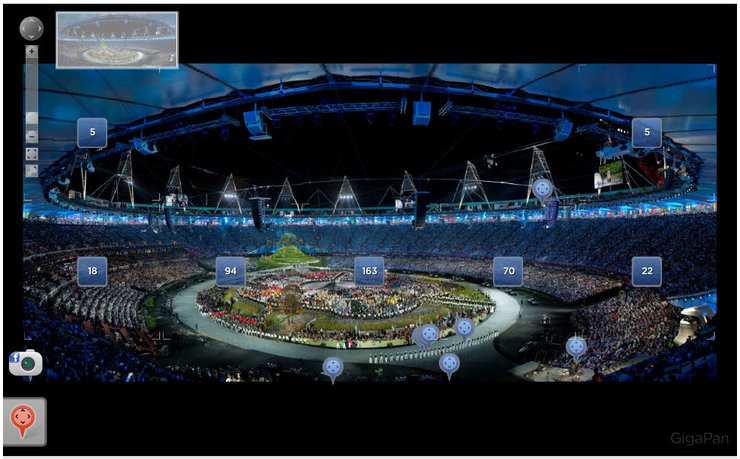
“NBC and Sports Illustrated teamed up to take eight gigapixel images of the 2012 Olympics in London,” says Marketing Manager Alicia Hunt. “Fans who weren’t able to travel to London were still able to participate and experience the event through these images.” In the stadium-wide panorama of the opening ceremony it is possible to zoom in enough to recognise individual faces in the crowd on the far side of the stadium.
As panoramic technology moves into the mainstream what are early adopters looking at next? A taste of the future is already available today. “One of the most interesting technologies for me,” says Holding, “is panoramic video.”
A company in Holland called Kolor can capture 360-degree video and as the viewer you can look around in a moving video. This is more complex than photos and requires at least five GoPro video cameras in a special mount, but the technology is already affordable enough for the early adopters to be looking into this concept. And while capture needs some special equipment consumers can view the results on their smartphone, tablet or computer, just like a spherical photo.

